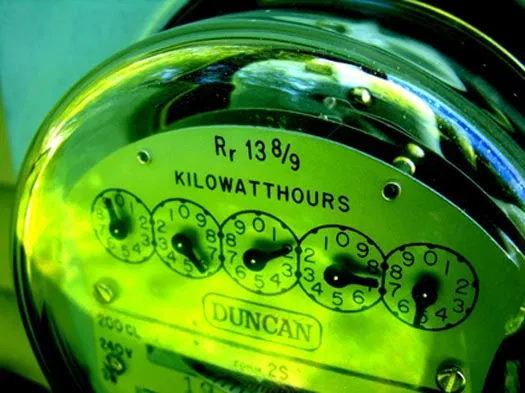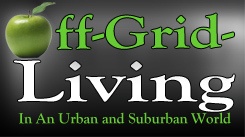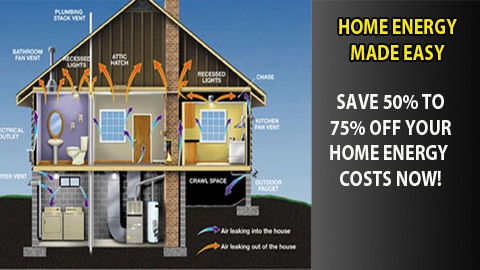
“To be off the grid is to be disconnected from most of America's infrastructure without having to cross any border.”
W. Kamau Bell

In this part of the training we will learn how to plan an energy audit and the resources that we need in the process. We will start with the definition of the energy audit and its scope.
Energy audit definition
An energy audit is the systematic inspection and analysis of energy use and consumption in a location, building, system or organization, in order to identify and inform about the energy flows and identify potential for improvement of energy efficiency But why do we need an energy audit?

The benefits of an home energy audits
As we all know the main benefits of an energy audit are the reduction in energy consumption and, therefore related costs and environmental impact. But the analysis will also give us a deeper knowledge of the facilities and processes for optimizing operations.

With an energy audit we will get:
- A description of energy consuming processes and facilities
- An energy consumption analysis. Where we will define not just how much energy is consumed but where and how
- We will also develop Energy balances and KPIs to control consumption.
- And, ultimately, we will outline a set of energy efficiency measures to lower energy consumption Depending on the needs of the company audited some of these topics can be more important than others and therefore require a higher level of detail.
It is important to discuss the specific needs before we start, in order to focus our efforts on the most important outcomes.
Its worth mentioning the consideration of life cycle costs instead of mere payback time when assessing energy efficiency opportunities and their financial impact This Directive describes the targets and action plans that the EU defined to reduce energy consumption. The goal is to increase energy efficiency by 32,5% until 2030.

Some actions to achieve this goal are
- 1) The promotion of energy audits, now required for large companies every four years
- 2) The certification of auditors and service suppliers to ensure competency
- 3) And the promotion of district heating and cooling, co-generation and thermal energy metering opportunities An audit is not only a good opportunity for the company.
Planning an home energy audit
Now lets take a look at the planning for the energy audit before the process begins When planning the audit, the two main topics of discussion are the scope definition and the auditor team selection. Also, documentation on occupational risks should be addressed for things such as metering equipment installation It is the managers responsibility to define the main objectives of the audit and its expected scope. It is important to have clear expectations and balance the detail level and the budget and time allocated for the project.
Also, management should select the auditor team as well as appoint a person that can guide them through certain facilities, collect documentation and coordinate with other departments.
The decision related to future investments rests also on the managers side. One of the key planning steps is the selection of the auditor team. This team must have the proper training and understanding of the facilities and the time and commitment to develop the project. It is important that the team balances knowledge about the processes and independence for evaluation, in order to avoid a subjective analysis of energy performance. The European Standard states that capability, confidentiality, impartiality and transparency are the 4 main qualities that the auditor team must have.
To ensure a smooth auditing process it is important that the team: Informs periodically about the status of the plan That they minimize interference in the day-to-day operations and follow occupational risks guidelines And, ultimately, that they develop the audit with the expected scope and timeline.

Home energy assessment
Now lets delve into the scope of the audit activities. The scope and level of detail of the audit has to balance our needs with the available budget, previous information, competences of the team and metering equipment. First of all, we need to assess what our main concerns and priorities are. Depending on them we can audit the entire organization or focus our efforts in specific production or auxiliary processes.
The level of detail can vary between systems. All of this has to be coordinated with the projects budget. It is advisable to consider not only the time for the audit itself but also the subsequent time for the deployment of the energy efficiency measures. We have to consider that the auditors may need metering equipment to analyze the destiny of the energy consumption, such as grid analyzers or flow meters.
This devices are not absolutely necessary to perform the audit but certainly improve the audits results and accuracy.
The access to documentation is crucial for the analysis. Confidentiality agreements can ease the flow of documents, more so when working with outside consultants. One of our first tasks will be gathering all the available information regarding energy consumption and equipment. These items are usually divided throughout the departments of the company such as maintenance or finance. Here you can find a list of initial information to collect during the first phases of the project.
Aside from that internal information, to help with the assessment it is advisable to consult reference guides such as the BREF documents. These are guidelines published by the EU that serve as a reference of best available techniques and allows us to benchmark our systems energy consumption.
Moreover, national energy agencies provide further documentation on this tailored to the countrys regulations.
The energy audit process consists of six main phases, as defined in the European Standard. First, the kick-off meeting shall start the process with the appointment of the auditor team, the agreement of objectives and scope and the plans for documentation gathering and fieldwork.

6
home energy audit checklist
Phase 2 is documentation gathering. As we explained before we will have to compile documentation about current consumption, diagrams and schemes about processes and facilities and previous energy efficiency efforts such as audits or measurements. Meanwhile, the fieldwork data gathering will consist of inspections of the facilities and a set of energy consumption measurements to know the distribution of energy consumption and the load profiles. On this phase we will develop the initial ideas of energy efficiency measures. Once we have sufficient information we can start analyzing the data and developing energy balances and energy efficiency proposals.
We will analyze the current situation and detect inefficiencies and incidences to propose energy efficiency measures. All of this will be compiled in an audit report. In this document we must include our findings, the methodology followed and document the whole process Finally, it is important to have a final meeting to present the report and discuss the findings.
This step is key in order to develop future action plans and ensure the implementation of the audits proposals. This Gantt diagram serves as an example of the chronogram that an energy audit follows.
The timeline can vary depending on the size of the company, the available time and the energy measurement needs. As you can see, some of the phases overlap each other. We can start analyzing information and developing the report while we wait for other systems information..
7
Home Energy Checklist
The Federal Energy Management Program (FEMP) offers the following checklists to help people conserve energy in homes. By implementing these actions, homeowners can improve energy efficiency on a daily, weekly, monthly, and annual basis.
8
Daily
- Turn down the temperature of your water heater to the warm setting (120°F). You'll save energy and avoid scalding your hands.
- Check if your water heater has an insulating blanket. An insulating blanket will pay for itself in one year or less!
- Heating can account for almost half of the average family's winter energy bill.
- Make sure your furnace or heat pump receives professional maintenance each year. And look for the ENERGY STAR®
- label when replacing your system.
- Review additional strategies to reduce your water heating bills. Water heating can account for 14%-25% of the energy consumed in your home.
- Survey your incandescent lights for opportunities to replace them with compact fluorescent lights (CFLs) or light-emitting diodes (LEDs). CFLs can save three-quarters of the electricity used by incandescents. The best targets are 60-100 W bulbs used several hours a day.
- Turn off the lights in unoccupied rooms or consider installing timers, photo cells, or occupancy sensors to reduce the amount of time your lights are on.
- Turn off your computer monitor when not in use for more than 20 minutes, and turn off both the CPU and monitor if you're not going to use your computer for more than 2 hours.
- Unplug equipment that drains energy when not in use (i.e. cell phone chargers, fans, coffeemakers, desktop printers, radios, etc.).
- Install a programmable thermostat that can be adjusted to temperatures according to your schedule. And look for the ENERGY STAR® label when replacing your system.
- During winter, open curtains on your south-facing windows during the day to allow sunlight to naturally heat your home, and close them at night to reduce the chill you may feel from cold windows.
- Clean or replace filters in your furnace, air conditioner, and heat pump.
- ENERGY STAR labeled products can cut your energy bills by up to 30%. Find retailers near you on the ENERGY STAR website
9
-
Weekly
- Visit the hardware store. Buy a water-heater blanket, low-flow showerheads, faucet aerators, and CFLs, as needed.
- Rope caulk or add film to leaky windows.
- Assess your heating and cooling systems. Determine if replacements are justified, or whether you should retrofit them to work more efficiently to provide the same comfort (or better) for less energy.
10
Monthly
- Collect your utility bills. Separate electricity and fuel bills. Target the largest energy consumer or the largest bill for energy conservation measures.
- Insulate your hot water pipes to prevent heat loss.
- Insulate heating ducts in unheated areas, such as attics and crawlspaces. Keeping ducts in good repair can prevent heat loss of up to 60% at the registers.
- Seal up the largest air leaks in your house—the ones that whistle on windy days, or feel drafty. The worst culprits are usually not windows and doors, but utility cut-throughs for pipes ("plumbing penetrations"), gaps around chimneys and recessed lights in insulated ceilings, and unfinished spaces behind cupboards and closets. Better yet, hire an energy auditor with a blower door to point out the worst cracks. All the little, invisible cracks and holes may add up to as much as an open window or door without you ever knowing it!
- Install a programmable thermostat to set your thermostat back automatically at night.
- Schedule an energy audit (ask your utility company or state energy office) for more expert advice on your home as a whole. Learn more about home energy audits.
11
Annually
- Insulate. If your walls aren't insulated have an insulation contractor blow cellulose into the walls. Bring your attic insulation level up to snuff.
- Replace aging, inefficient appliances. Even if the appliance has a few useful years left, replacing it with a top-efficiency model is generally a good investment. Especially check the age and condition of your refrigerator.
- Upgrade leaky windows. It may be time to replace them with energy-efficient models or to boost their efficiency with weatherstripping and storm windows. The typical home loses more than 25% of its heat through windows.
- Upgrade your computer and monitor. Consider replacing your desktop computer with a notebook computer and docking station, and your cathode ray tube monitor with a liquid crystal display (LCD) or LED monitor. (See Estimating Appliance and Home Electronic Energy Use.)
- Reduce your air conditioning costs by planting shade trees and shrubs around your house.

